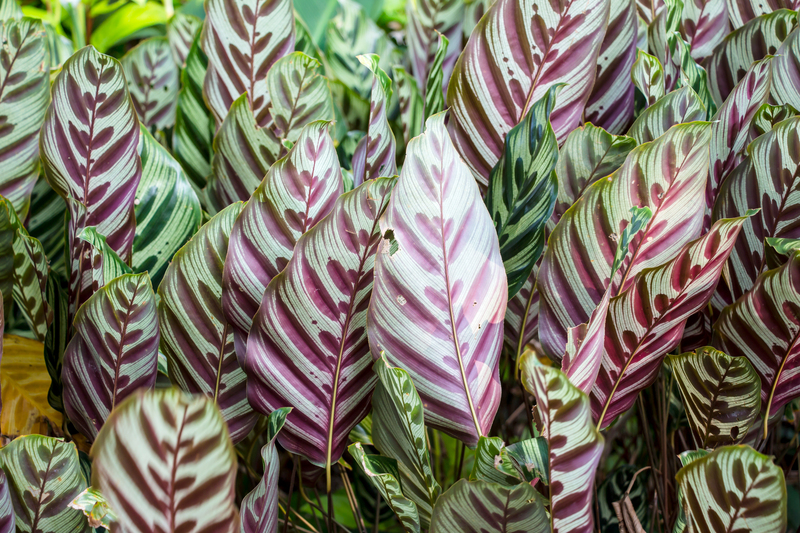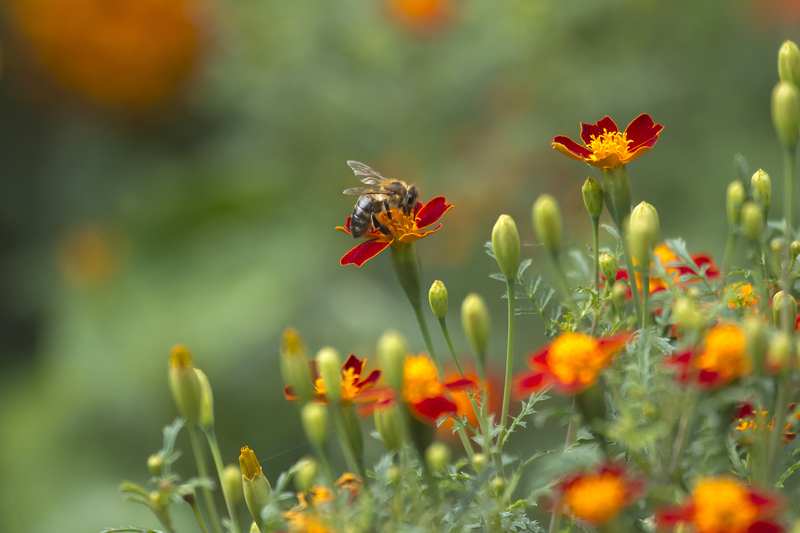Understanding the Basics of Container Gardening
Posted on 19/09/2025
Understanding the Basics of Container Gardening
Are you intrigued by the idea of cultivating a thriving garden even without a spacious backyard? Container gardening offers an ideal solution for urban dwellers, beginners, and anyone looking to add a splash of greenery to small or unconventional spaces. This guide will walk you through the essential basics of container gardening, providing an in-depth foundation for creating a successful and beautiful potted garden.
What is Container Gardening?
Container gardening refers to the practice of growing plants--flowers, vegetables, fruits, or herbs--exclusively in pots, tubs, boxes, hanging baskets, or other portable containers rather than in the ground. This versatile gardening method is especially popular among those with limited outdoor space, such as apartment dwellers, or those seeking to add greenery to patios, balconies, or even windowsills.
- Flexible and portable
- Ideal for restricted spaces
- Allows easy control over soil and water
- Accommodates both edible and decorative plants

Why Choose Container Gardening?
_Container gardening_ comes with a host of appealing benefits:
- Space Efficiency: Perfect for small apartments, urban homes, and areas with poor soil conditions.
- Mobility: Easily move containers to adapt to sunlight, rain, or aesthetic preferences.
- Pest and Disease Management: Greater control over plant care, with reduced risks from soil-borne diseases and certain pests.
- Accessibility: Container gardens can be placed at different heights, making gardening accessible for those with mobility concerns.
Choosing the Right Containers
Selecting the appropriate plant containers is a crucial first step. Here's what you need to consider:
Material Matters
- Terracotta: Attractive, breathable, but dries out quickly.
- Plastic: Lightweight and retains moisture, but can overheat in direct sun.
- Ceramic: Glazed options retain moisture well and come in various sizes and styles.
- Metal: Modern look, but can heat up and damage roots without proper insulation.
- Wood: Natural and insulating, though it may deteriorate over time if not treated.
Size and Drainage
The size of your pot will directly affect your plant's health. Most plants need a container that's large enough to accommodate root growth--typically at least 12 inches in diameter for vegetables and flowers.
Drainage is critical: Always ensure pots have drainage holes to prevent waterlogging, which can lead to root rot.
Selecting the Right Plants for Container Gardening
The beauty of container gardens lies in their versatility. You can grow almost anything in a pot if you provide the right conditions. However, some plants adapt better to life in containers:
- Herbs: Basil, mint, parsley, chives, and thyme thrive in pots.
- Vegetables: Lettuce, spinach, tomatoes, peppers, radishes, and bush-type beans are all suitable.
- Fruits: Strawberries, dwarf citrus trees, and blueberries perform well.
- Flowers: Petunias, marigolds, pansies, begonias, and geraniums provide color and fragrance.
- Indoor Foliage: Ferns, dracaena, and spider plants add greenery inside your home.
Plant Compatibility and Combinations
When creating a mixed container garden, choose plants with similar sunlight, water, and nutrient needs. Combining upright, trailing, and filler plants creates visually appealing arrangements.
TIP: Try the "Thriller, Filler, Spiller" concept for maximum impact:
- Thriller: Tall, dramatic plant for the center or back (e.g., ornamental grass, coleus)
- Filler: Mounding plants to fill mid-section (e.g., impatiens, geraniums)
- Spiller: Trailing plant to soften edges (e.g., ivy, sweet potato vine)
Soil and Fertilizer for Container Gardening
Proper soil choice is essential for successful container gardening. Regular garden soil is typically too heavy for pots and can lead to poor drainage.
- Use high-quality potting mix for optimal drainage, aeration, and nutrients. Look for mixes with perlite or vermiculite.
- Container mixes often include slow-release fertilizers; otherwise, supplement with water-soluble fertilizer as your plants grow.
- Rejuvenate soil annually by replacing the top inch or two, or fully changing the soil for edibles to prevent disease build-up.
Nutrient Management
Intensive watering leaches nutrients from containers. Use a balanced fertilizer every few weeks during active growth, following package instructions to avoid overfeeding or burning plants.
Watering Techniques in Container Gardening
Plants in container gardens require consistent moisture because pots dry out faster than garden beds.
- Water thoroughly until excess drains out the bottom.
- Check soil moisture daily, especially during heatwaves.
- Early morning or late evening are ideal times to water.
- Self-watering containers can help maintain consistent hydration.
Dealing with Overwatering
Overwatering is a common pitfall in potted plant care. Always empty excess water from saucers and improve drainage with coarse materials (like gravel) at the container base.
Lighting Considerations for Your Container Garden
The amount of sunlight your container garden receives will dictate which plants thrive:
- Full Sun: At least 6-8 hours daily; best for most vegetables and flowering annuals.
- Partial Shade: 3-6 hours daily; suitable for many herbs, ferns, and impatiens.
- Full Shade: Less than 3 hours; try begonias, caladiums, and hostas.
_Observe your chosen area throughout the day_ and select the right plants for the light conditions to ensure successful container gardening.
Arranging and Styling Container Gardens
Placement and design are where your creativity shines in container planting:
- Group pots of different heights and materials for visual interest.
- Use large, bold containers as focal points with smaller pots surrounding.
- Incorporate ornamental grasses or evergreens for year-round appeal.
- Hanging baskets and vertical planters maximize space on balconies or fences.
Seasonal Care and Maintenance
Regular upkeep is key for beautiful container gardens throughout the year.
- Deadhead spent flowers to encourage more blooms.
- Pinch back leggy growth for bushier plants.
- Refresh top layer of soil seasonal and remove debris.
- Check for pests such as aphids or spider mites and treat promptly.
- Bring tender perennials indoors before frost, or use frost blankets for protection.
Troubleshooting Common Container Gardening Issues
Even experienced gardeners encounter challenges. Here are common container gardening problems and quick fixes:
- Wilting Leaves: Could be under-watering, overwatering, or root-bound plants. Check moisture and repot if needed.
- Yellowing Foliage: Possibly a nutrient deficiency or poor drainage. Fertilize and ensure adequate drainage.
- Pests: Inspect regularly and use insecticidal soap or remove pests by hand.
- Mold or Fungus: Improve air circulation and cut back on watering.
- Outgrown Containers: Repot into larger containers when roots outgrow the space.
Eco-Friendly Practices in Container Gardening
Incorporate sustainable gardening practices to reduce your environmental impact:
- Use organic potting soils and natural fertilizers whenever possible.
- Recycle old containers or repurpose household items as planters.
- Harvest rainwater for watering.
- Compost kitchen scraps to enrich soil.
Container Gardening for Beginners: Quick Tips
- Start simple: Begin with easy-to-grow herbs or sturdy annuals.
- Don't overcrowd: Give each plant room to flourish.
- Rotate containers: Move pots to catch the sun as seasons change.
- Label your plants--especially helpful for mixed edible pots.
- Enjoy the process! Container gardening is as much about experimenting as it is about producing a perfect display.

Frequently Asked Questions About Container Gardening
Can I use any container for planting?
Almost anything can become a container garden, provided it is large enough for root growth and has adequate drainage.
How often should I water my containers?
Check plant moisture daily, especially in hot weather. Many containers need watering every day, but this varies with plant type and local climate.
What is the best soil for container gardening?
Always use high-quality potting mix instead of garden soil for your pots.
How do I fertilize plants in containers?
Use water-soluble fertilizer every two to four weeks for continuous nourishment.
Conclusion: Grow Your Green Space Anywhere
Container gardening opens up a world of possibilities for plant lovers everywhere. Whether you're working with a tiny balcony, a sunny windowsill, or a modest patio, you can create lush, productive, and vibrant gardens without traditional ground beds. From choosing the right pots and soil to selecting compatible plants and maintaining them year-round, mastering the basics of container gardening empowers you to design a personalized oasis that matches your lifestyle and space constraints.
Start small, experiment, and let your creativity thrive while enjoying the countless benefits of your own portable, productive container garden.



